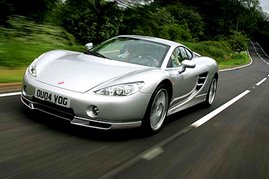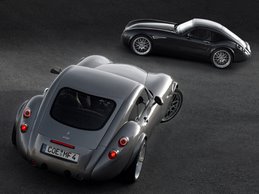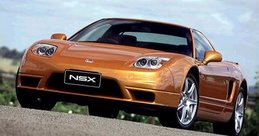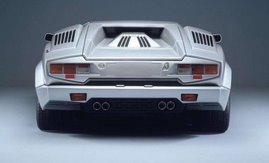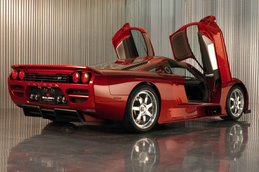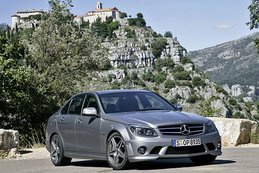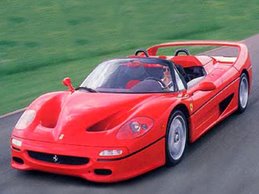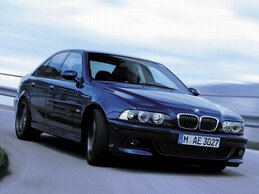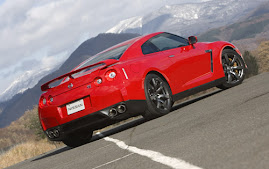skip to main |
skip to sidebar
By Bruce McCullochThat, folks, is what BMW calls protecting the environment; building more fuel-efficient and earth-friendly “eco” cars. Rather than sticking to the usual catch phrases of having their vehicles named such things as “LEV” (Low Emissions Vehicle), BMW deems such a name necessary to separate themselves from most every other company who practice the identical, uh, practice.
 Mind you, this is not limited to their ideals and practices on emissions, but most everything; as of late, BMW has had the great tendency to label every basic and simple technological invention with some special name; and quite frankly, it’s a marketing gimmick which is just starting to piss me off.
Mind you, this is not limited to their ideals and practices on emissions, but most everything; as of late, BMW has had the great tendency to label every basic and simple technological invention with some special name; and quite frankly, it’s a marketing gimmick which is just starting to piss me off.
Now, let us take a look at the many BMW marketing names.
“Active Hybrid”:
Rather than the simple approach at calling their upcoming hybrid system a mere “Hybrid”, it just has to be an “Active Hybrid”. So then, am I supposed to believe that hybrids developed by that of Toyota and Co. are non-active?
Furthermore, BMW says the Active Hybrid version of the X6 will feature “a high-performance battery” and a “high-efficiency combustion engine”. Now quite frankly, this is bunch of doo-hickey.
“SAV”:
Sport Utility Vehicle (AKA “SUV”) used to be a hot type of vehicle, but it’s now a thing of the past and that’s why BMW chooses to label its X5 and X3 with the name of “SAV”. And thus indicates “Sport Activity Vehicle” - because it’s oh-so-good to advertise something that gives you an “active lifestyle”. Oh, please...
“SAC”:
With BMW’s upcoming sporty X6 (the concept of which was seen at Frankfurt), BMW thought neither “SUV”, nor “SAV” was appropriate. No, instead the swoopy X6 is called an “SAC”. This indicates “Sport Activity Coupe” and you know, that’s really great considering the vehicle has four doors and is a 4X4 – no matter how pointless it is as one, but then that’s just about right for all “performance” SUVs and a whole 'nother ball of wax…
“PAS”:
BMW’s next addition to their lineup – codenamed the V5 with production slated for 2009 – will wear the acronym of “PAS”. And like previous mock-ups, this has some sort of deep meaning, or at least BMW would like to believe. “PAS” stands for “Progress Activity Sedan”. Which sort of reminds me of those inscrutable, tortured Chinese-to-English translations the Chinese are putting on their home-grown cars these days, and seems faintly ridiculous on a BMW.
And I’ve saved the absolute best for last,
“LCI”
What do you call a facelift of a vehicle? Well, I, like most everyone else, call it a “facelift” as it seems logical. But of course, that’s too simplistic, so BMW calls them “LCI”; or in other words, a “Life Cycle Impulsive”.
Now excuse me, but that’s completely idiotic. We all know that neither the true enthusiast, nor the poseur, is going to purchase any of these vehicles and call them any of the aforementioned. Additionally, our current market situation has a great deal of these vehicles selling themselves, even with stiff competition – so is there really a need for such linguistic embroidery?
And while we’re on the subject of marketing tactics from BMW, I’d like to mention my displeasure with the European brochure of the M3 that I recently got the opportunity to read. In this particular brochure BMW employs a series of aggressive marketing tactics to make its competition look weak-minded. And for comparison, they’ve focused on three other entities; the Porsche 911, the Audi RS4 and the Mercedes-Benz CLK63 AMG.
In the case of the 911, BMW’s strategy is to acknowledge the 911’s greatness as a sports car, but make note of its lack of usability as a daily driver because of its tiny rear seats and small boot space. And whilst the boot space is small and the rear seats tiny, a large number of 911 owners would argue that their car can comfortably be used as a daily driver. Yes, it’s most likely not as good as a daily driver as the M3, but is there really a need to make such a dramatic attempt at downplaying the competition?
And it doesn’t tone down as they give their expert insight on both the Audi RS4 and Mercedes-Benz CLK63 AMG. Their Ingolstadt rival takes a further beating when BMW insinuates that they themselves pioneered “the high revving engine concept”, and that Audi is clearly following their path. Additionally, they’re sure to mention the M3’s significant (lower) weight advantage over the RS4 due to the Audi’s implementation of AWD – which BMW claims has an effect on the RS4’s steering, labeling this “palpable”.
As for the CLK63 AMG, well, it takes the blunt side of the shovel when BMW claims the CLK63 is nothing but a GT car with an engine which is relatively un-interesting and a transmission which suffers from “long-legged ratios”. They finish the CLK63’s description with, “but it does not have the thoroughbred genes of the sports car”. What makes that particular quote quite idiotic is that BMW themselves explained throughout the first two sentences of the CLK’s description about how a GT car should be weighted towards comfort as opposed to sport and how this perfectly caters to the company’s customers.
Truth is, there isn’t much which BMW states that is untrue – the CLK63 is a GT, the RS4 is heavier than the M3 and the 911 is a slight less practical – but I simply cannot understand why BMW takes such aggressive marketing tactics. Companies that are reduced to making their competitors look weak generally resort to this because their product is not strong enough to stand on its own merits. This is not the case with BMW – despite the goofy names for their technology and their cars, they generally make fine vehicles. And it’s not like they have to worry about sales and what-not; after all, this is a company which on average, sells 10,000 3-Series every month in North America. Perhaps I’m just a nitpicker, but I personally find this tactic a bit much.
This strategy, combined with the aforementioned, increasingly idiotic naming conventions, has made me unhappy with BMW as of late. This is a company that occupies the rarefied air at the top of the automotive industry and it is employing cheap marketing tricks and insulting their able competitors. To me, it’s all a bit unseemly and shows poor form.
 By Bruce McCullochAnyone else remember when the automotive world, specifically that which is the supercar world, was limited and controlled? By limited and controlled, I’m referring to a market where the number of supercars wasn’t reminiscent to the vast amount of fruit types you buy at the super-market.
By Bruce McCullochAnyone else remember when the automotive world, specifically that which is the supercar world, was limited and controlled? By limited and controlled, I’m referring to a market where the number of supercars wasn’t reminiscent to the vast amount of fruit types you buy at the super-market.
It’s no secret that I love supercars and take great joy in discussing them, examining them and above all else, dreaming about them. After all, supercars are the acme and epitome of the automotive world; they showcase all of which has advanced in our century – speed, power, technology, handling, braking – you name it, actually.
Thing is, though, I’m starting to lose much of my faith and interest in supercars and the reason is because they are now becoming a bit garden variety, a rich man’s play palace where bragging rights are the number-one priority. Though, one could argue that’s always been the case with these unambiguously expensive automobiles, but I happen to think the market has finally shifted them into an undesirable state.
Never did I think that in my life time supercar companies would be competing for a market share which in retrospect is similar to that Toyota versus Honda – albeit at a much smaller level. The supercars market through out the 90’s was much simpler and it only consisted of a few marques; those being such greats as Ferrari, Lamborghini, Porsche and Jaguar. It was all so simple back then, but now we don’t have just four marquees, we over have twenty and probably some more on the way as I type this – all jostling for their place and of course, while trying to out-do each other.
Sure, it always about competing, but not at such a level as it is now. And it would appear that the turn of the decade was the birth of these many new manufacturers and the “new” way of selling, producing and manufacturing these automobiles. No longer is it a simple and mostly innocent game of billiards among guys that know each other down at the gentlemen’s club, (where you also debate important things like Jessica Alba or Rosario Dawson, steak or lobster, etc. ), it’s an all-out war where the specialty maker that produces the most powerful car is ultimately the winner.
Production, Performance & Power:
With the exception of F40, exotic production through out the 1990’s was pretty low-key. Just 300 Jaguar XJ220’s were built, just 349 Ferrari F50’s were manufactured; and on a smaller scale of exotica, just 60+ some McLaren F1’s were built. Furthermore, each of these high-end models didn’t have a dozen multiple variations.
Thus is the main reason why my interest in supercars is swiftly fading. As these companies are now engrossed in making big money and keeping up with the competition, one variation with a 5-year life span is deemed no longer sufficient from a business point of view. Now, if you plan to have a 5-year life span for a model it’s going to need multiple updates; everything from a new sticker on the boot to a possible 200 horsepower upgrade.
Look at the recent crop of Aston Martin’s for instance. Firstly, they had the 6-speed sequential DB9 coupe, then a 6-Speed Sequential cabriolet, then a 6-speed coupe and then 6-speed cabriolet, then a sports package, and then an 06 model update featuring everything that sports pkg had and now, the DBS and the DB9 LM. Even the V8 Vantage has undergone a similar twist of marketing with potential owners being force-fed multiple variations; each one promising something new and unique. Even such companies as Lamborghini and Bugatti have followed this trend; evidenced by both launching special editions of their flagship at the Frankfurt Autoshow.
And let us have a look at the power upgrades these vehicles are constantly undergoing. The first generation Koenigsegg CC8S had 655bhp – more then enough for any sane individual – but 600+ bhp was becoming a casual figure (even amongst various Mercedes-Benz automobiles), and as a result the company decided to step it up and give it a full 806bhp. That is merely one example, but one that is evidently at the top of the peak; other such manufacturers are following by pumping up model updates with an additional 100 some horsepower.
And so forth and so forth, company and after company following these trends. Now, I am fully aware that from a business standpoint such an approach is doing these manufacturers mighty, so why then, am I complaining?
Guess I’m just an ‘ol car romantic; I loved the day when the market was exclusive and unique. It was smaller, and therefore more mentally manageable, and frankly, more emotionally intimate regarding the wonderful machines themselves.
Guess I should get used to the Camry vs. Accord market of the supercar, eh?
By Bruce McCulloch
FRANKFURT: You may recall that just a few days ago I wrote a short piece on Wiesmann’s up and coming “MF5” flagship supercar. At the time at which that was written little was known about how much the vehicle would differ from its counterpart, but the time of pondering has come to an end as Wiesmann has now released the final details of the vehicle.
So then, what shall we start with? Well, how about the “revealing” of the new car. Many, including myself, had assumed that Wiesmann was to release the MF5 at the Frankfurt Autoshow, but that turned out to be untrue. Rather than renting out a spot at Germany’s most prestige Autoshow, Wiesmann deemed it more than appropriate to rent out the bottom half of the Frankfurt’s “lighttower” on the main street of the German city. A private, more organized showing; yes, but certainly not a coincidence that they decided to reveal it in the town of Frankfurt during Autoshow week. So, PR tricks and all, let us get to the actual vehicle:
 If wanting to turn heads is your thing, the new MF5 will not fail to deliver as it looks like nothing else. It’s blunt, angry, aggressive and above all else, racy. There’s little doubt in my mind that Wiesmann’s goal was to make the MF5 visually as close as possible to their successful GT race car. And I had suspected upon first glance of the vehicle that it had notably grown in size over its counterpart and indeed, it has; the MF5 is 5 cm lower, 9.6 cm wider, 8 cm longer and lastly, features modifications in width to both the front and rear track.
If wanting to turn heads is your thing, the new MF5 will not fail to deliver as it looks like nothing else. It’s blunt, angry, aggressive and above all else, racy. There’s little doubt in my mind that Wiesmann’s goal was to make the MF5 visually as close as possible to their successful GT race car. And I had suspected upon first glance of the vehicle that it had notably grown in size over its counterpart and indeed, it has; the MF5 is 5 cm lower, 9.6 cm wider, 8 cm longer and lastly, features modifications in width to both the front and rear track.
 The changes are evident too; deeper front facia, various air-vents amongst the body and a rear end that looks like something out of a cartoon. Notable are the spoiler – made from nothing other than carbon fibre – and a redesigned undertray diffuser intended to help the MF5 keep it controlled at the amazing speeds which it’s able to achieve. And trust me, you’ll need it.
The changes are evident too; deeper front facia, various air-vents amongst the body and a rear end that looks like something out of a cartoon. Notable are the spoiler – made from nothing other than carbon fibre – and a redesigned undertray diffuser intended to help the MF5 keep it controlled at the amazing speeds which it’s able to achieve. And trust me, you’ll need it.
You’ll need it because as I’ve mentioned before, this car has the same 10-cylinder motor from the BMW M5 and M6. In short, that means a 12.1 compression ratio, 507bhp, 384lb-ft of torque (or 520 Newton Metres) and a wonderful redline of 8,250 rpm.
I had previously speculated on what transmission the MF5 would be using; perhaps thinking Wiesmann would offer both a manual and a sequential transmission for the vehicle – as they had done with previous vehicles. However, it would turn out that the MF5 is only available with BMW’s 7-speed sequential SMG transmission. Still, having SMG to play with in a 507bhp supercar can hardly be a vice…
 One big and obvious push with the MF5’s release is Wiesmann’s business philosophy in making sure it’s road-worthy and more importantly, safe. Thus is why this vehicle boasts a whole level of features not available on previous models: “Dynamic Stability Control” (DSC), “integrated side-collision protection”, “3 point seat belts” and a whole host of other features likely to keep you alive, if not unscathed, should you slide off the road. And to back it up, all of these systems have been developed by the great conglomerate that is BMW. Not unique to Wiesmann, the specialty car manufacturer, some one-off fans might query? True, but tried and tested by one of the foremost car companies in the world, with superb engineering resources at their disposal, so you know it will work when it needs to, and that’s fine with me.
One big and obvious push with the MF5’s release is Wiesmann’s business philosophy in making sure it’s road-worthy and more importantly, safe. Thus is why this vehicle boasts a whole level of features not available on previous models: “Dynamic Stability Control” (DSC), “integrated side-collision protection”, “3 point seat belts” and a whole host of other features likely to keep you alive, if not unscathed, should you slide off the road. And to back it up, all of these systems have been developed by the great conglomerate that is BMW. Not unique to Wiesmann, the specialty car manufacturer, some one-off fans might query? True, but tried and tested by one of the foremost car companies in the world, with superb engineering resources at their disposal, so you know it will work when it needs to, and that’s fine with me.
As for the interior, well, modifications are mostly vacant, but that still hasn’t stopped the small manufacturer from further improving upon the vehicle. Notably, the MF5 comes standard with driver and passenger airbags – something never available on any previous Wiesmann – as well as redesigned bucket seats with supposed “excellent lateral support”. Also worth mentioning is that these seats are made to order, and designed to fit each and every customer. Should that not be enough incentive to purchase one of these, you’ll be glad to learn that one can order special seats made from carbon fibre basing - which are of course lighter.
Suffice to say, the addition of the large 10-cylinder motor and various safety components, the MF5 has gained some 140kg over its counterparts; 1240 vs 1380kg, MF4 vs MF5 respectively. Nevertheless, 100 km/h (62 mph) is promised to take just 3.9 seconds.
So there you have it – should you have the desire; and above all else, the money to purchase something rare (just 25 are expected), powerful, fast and wacky, this is a great choice. Production is set to start in the spring time of 2008, but be prepared, starting prices commence at a base of 178,900€, and, of course, go up.
 Had you not yet heard, both world famous rally driver Colin McRae and his son lost their lives earlier today in a helicopter crash. Such is obviously an awful loss to the automotive world.
Had you not yet heard, both world famous rally driver Colin McRae and his son lost their lives earlier today in a helicopter crash. Such is obviously an awful loss to the automotive world.
You know, I never watched rally all that much, but the name "McRae" is one which is surely unmistakable to most any automotive enthusiast. As far as I'm concerned, Colin was the world's greatest rally driver. After the fall of the Group B series, he is most notably the man who put the sport back on the map.
Cheers to a great driver, and a great man. My condolences to his family.
I'm nearly in tears in ending this message.R.I.P Colin
Transmission: M Division's "SMG"
Production: ca. 25
Base list price: EUR 180.000,--
With Ceramic brakes: EUR 200.000
Car eqquiped with driver-air bag


 By Bruce McCulloch
By Bruce McCulloch
Prepare to rev ‘em up, gentlemen.
With the 2007 Frankfurt Autoshow now upon us, German tuner-car and automobile manufacturing company, Wiesmann, is preparing to launch an all new flagship called the “MF5”. Based upon the lesser “MF4”, Wiesmann’s new (and apparently limited production) supercar is set to take the company to a new level of status, exclusivity, and ultimately, performance. Wiesmann Automotive will now have a vehicle to compete with mid-engine wonders like the 483bhp Ferrari F430 and front-engine behemoths like the 505bhp Chevrolet Corvette Z06.
As the official show has yet to open, little is known of how different this new GT will be from its regular counterpart, but we can at least get an idea with the aforementioned picture. Evidently, Wiesmann’s reworking of the front facia and headlamps have left the quirky and almost English-like MF looking far sinister than it has every before; whereas the MF4 was more about exquisite detailing, the MF5 makes no apologies for looking like it just rolled out of the racing department.
Mind you, as the MF4 was already turning heads, styling updates are hardly what it needed; nevertheless, it’s nice that they decided to throw in some extra eye-candy for the expected 30k+ premium over the standard model.
The real delight of this car will be its engine, which is the same one you’ll find in BMW’s M5 and M6 variants. Make no mistake; it’s a large leap from the existing model which is currently running on BMW’s 4.8 litre 8-Cylinder with 367bhp. This 10-cylinder motor boasts 5.0 litres, an 8,250 rpm redline, 507 bhp and 384 lb-ft of torque which peaks at 6,000 rpm. Already praised and recognized as one of the best engines on the market, have no doubts that in a car weighing less than 1300kg, it’ll be able to take most any individual to the moon and back.

What is unclear at the moment is whether the MF5 will adapt the M Division’s “SMG” transmission. Although, considering that Wiesmann’s own MF3 (the roadster version powered by E46 M3’s straight six) borrows upon the option of an SMG gearbox, it’s very likely. Having said that, it’s also very likely that Wiesmann will let its buyers opt between the highly advanced and technological wonder of “SMG” and a conventional (and perhaps old-fashioned) 6-speed. And if so, I’ll take the latter…
And to further awe us, Wiesmann chose that light blue – arguably the funkiest of all colours – to reveal the car to the public. Stay tuned as more news will leak from Frankfurt!
By Bruce McCulloch
 If you’ve been thinking of picking up a Lexus GS, you might be best to hold off until the 2008 crop arrives with the introduction of a meatier 8-cylinder model.
If you’ve been thinking of picking up a Lexus GS, you might be best to hold off until the 2008 crop arrives with the introduction of a meatier 8-cylinder model.
For 2008, Lexus will be dropping the GS430, in favour of a brand new GS460 which will not only be benefiting from a more powerful engine, but a host of other exciting and enticing features.
Whilst Lexus has just (less than 48 hours ago) released the photo seen here of the updated ’08 model, they have deemed it appropriate to previously release a great deal of the model details through a press release from their pressroom. Should you not have access to their press room and am interested, I will be glad to give you information you’ll need (and want) to know should you be interested in placing an order on an 2008 Lexus GS.
The most obvious, and perhaps fundamental of changes which the ’08 GS benefits from is a modified 8-cylinder engine with not only more power, but more displacement. This updated model promises an extra .3 litres of displacement bringing the tally total to 4.6 litres with the addition of 342bhp peaking at 6,400 rpm with a robust 339lb-ft of torque rushing in at 4100 rpm. For respective comparison, this means the GS460 not only has an additional 52 some horsepower advantage over its previous model, but an extra 20lb-ft of torque as well. Unfortunately though, this extra bit of torque comes at a full 700 rpm later than the 430; nevertheless, Lexus promises its GS will hit zero-to-sixty in 5.4 seconds and top zero-to-one-hundred mph in 14.2 seconds.
And putting this additional power to the road is no longer the job of Lexus’ 6-speed automatic transmission, but rather the same 8-speed automatic transmission we’ve already seen showcased in their flagship model, the LS; and one that is soon to be seen on their performance flagship, the upcoming IS-F.
Lexus claims both the 2008 GS350 and GS460 will benefit from that of a “revised front bumper with lower-intake and front grille with chrome-plated surround”. Additionally, Lexus promises 2008 GS variants will feature “ultraviolet and infrared-ray reducing tinted glass for all windows”, “a new 17-inch designed alloy wheel” and the choice of two new exterior colours, “Golden Almond Metallic” and “Opaline Pearl”.
Should that not be enough to satisfy your tastes, you’ll be happy to hear that the interior will also feature a few new features to keep most any diehard Lexus enthusiast happy.
When it comes to the general interior ambience you’ll be delighted to hear that the GS will now offer the option of Light Gray Leather with the addition of a luxurious “Dark Gray Birds-Eye Maple wood trim” with the option of wood trim on the door switch plates. Further adding to the ’08 GS’s allure are “relocated fuel lid and trunk opener” as well as a “revised instrument cluster with revised aluminium brushing” and what-not. And to put the cherry on the top of the cake, GS460 owners will be able to spec their vehicles out with front seats with ventilation.
Overall, it’s a package which is surely not to disappoint the casual Lexus buyer, or am I wrong?
Well, actually, Lexus enthusiasts worldwide have not been afraid to reveal their disappointment and annoyance with this model update. While no one can deny that the GS is a great car and most definitely a worthy competitor to the Mercedes-Benz E-Class and BMW 5-Series, it feels as if the car is starting to run its course.
For starters, most would have naturally assumed that the GS460 would have been directly carrying over the LS460’s massively powerful 380bhp V8, but such is obviously not the case; perhaps they felt it was necessary to keep the LS the absolute flagship of the line-up? So then, it would appear that Lexus has decided to essentially de-tune the LS460 engine, or have they? According to Lexus’s press release, this particular engine wears the code of “1UR-FSE”; the problem with this is that most Lexus enthusiasts believe it to be a typo throughout the original document as LS460’s shipped to the Middle Eastern market are sporting the identical power figures to this GS460, but are wearing the engine code “1UR-FE”. The notable difference between the two would be the “FSE” labelling and without the “S”, thus indicating a lack of direct fuel injection.
Whether this is at typo, or an actual LS460 engine with direct fuel injection merely detuned to 342hp, is unclear at the moment. My personal guess is that it is indeed a typo and this engine is the one lacking direct fuel injection; or in other words, a “1UR-FE”.
In any event, while 342hp is certainly more than enough to satisfy the power needs of most any luxury cruiser, it still means that the GS460 is 40 some horsepower behind that of the recently updated Mercedes-Benz E-Class which is now getting 388bhp from it’s revised 8-cylinder; this also means the GS460 is slightly behind the 2007 BMW 550i which boasts a hardy 367bhp.
Meanwhile, I believe there is an even greater threat to the GS460 and it’s internally.
In all honestly, I am wondering why Lexus is deciding to keep the gap between its three GS variants so awfully close. Such is especially evident when one looks at the difference between other Lexus models such as the IS and LS. The LS for instance, varies in price from $61,000 USD to a massive $100,000 USD, with horsepower varying from 380 from an all-petrol motor to 430 with a hybrid motor. With the IS, Lexus goes an even greater pricing distance between it’s models in North America varying prices from $30,000 USD to $50,000 USD and horsepower differences from 215 with the IS250, 306 with the IS350 and soon to be 400+ with the addition of the IS performance model, the IS-F.
Their GS on the other hand, is subject to a much smaller distance in variation with its models. Let’s face it, the GS350 with a full 303 horsepower isn’t exactly lacking, while the hybrid GS450h is offering equal power and performance to that of the GS460 for a price tag, which as current comparison between the models shows, will be more or less on an par with it’s V8 equivalent . Not to mention – if you planning on using you’re GS in the city, the added benefit of better fuel economy. Yes, I realize that with the 450h you’ll miss the throaty sound of a classic 8-Cylinder engine and not to mention a hefty addition of kerbweight, but frankly, that would not be enough to stop this enthusiast from purchasing the 450h over the 460. Make no mistake though, I have no doubts the GS460 will be a top-notch vehicle, fully deserving of the Lexus name plate and for those enthusiasts who crave V8 power in a Japanese car, you won’t be able to do much better.
And with that bombshell of a conclusion –an enthusiast choosing a hybrid 6 over a petrol 8 - I leave you this: by keeping a close distance between the GS460 and GS450h, is Lexus purposely trying to promote its hybrid model?
 Mind you, this is not limited to their ideals and practices on emissions, but most everything; as of late, BMW has had the great tendency to label every basic and simple technological invention with some special name; and quite frankly, it’s a marketing gimmick which is just starting to piss me off.
Mind you, this is not limited to their ideals and practices on emissions, but most everything; as of late, BMW has had the great tendency to label every basic and simple technological invention with some special name; and quite frankly, it’s a marketing gimmick which is just starting to piss me off.









